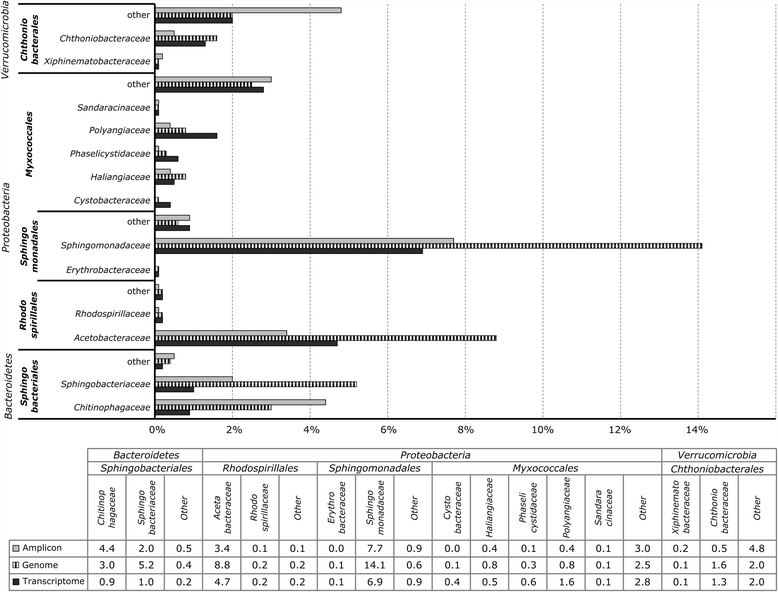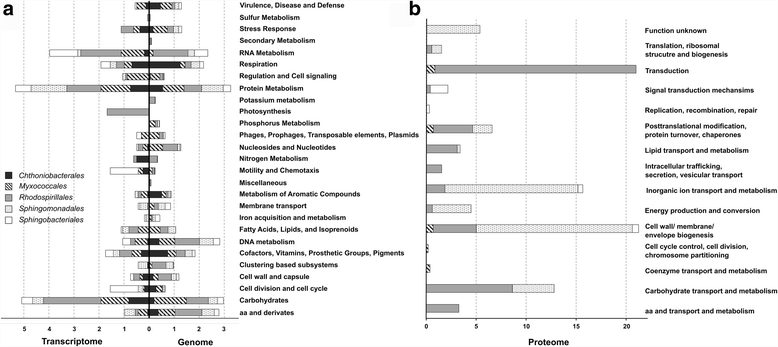Deciphering functional diversification within the lichen microbiota by meta-omics
- PMID: 28724401
- PMCID: PMC5518139
- DOI: 10.1186/s40168-017-0303-5
Deciphering functional diversification within the lichen microbiota by meta-omics
Abstract
Background: Recent evidence of specific bacterial communities extended the traditional concept of fungal-algal lichen symbioses by a further organismal kingdom. Although functional roles were already assigned to dominant members of the highly diversified microbiota, a substantial fraction of the ubiquitous colonizers remained unexplored. We employed a multi-omics approach to further characterize functional guilds in an unconventional model system.
Results: The general community structure of the lichen-associated microbiota was shown to be highly similar irrespective of the employed omics approach. Five highly abundant bacterial orders-Sphingomonadales, Rhodospirillales, Myxococcales, Chthoniobacterales, and Sphingobacteriales-harbor functions that are of substantial importance for the holobiome. Identified functions range from the provision of vitamins and cofactors to the degradation of phenolic compounds like phenylpropanoid, xylenols, and cresols.
Conclusions: Functions that facilitate the persistence of Lobaria pulmonaria under unfavorable conditions were present in previously overlooked fractions of the microbiota. So far, unrecognized groups like Chthoniobacterales (Verrucomicrobia) emerged as functional protectors in the lichen microbiome. By combining multi-omics and imaging techniques, we highlight previously overlooked participants in the complex microenvironment of the lichens.
Keywords: Amplicon sequencing; Lichen symbiosis; Lobaria pulmonaria; Metagenomics; Metaproteomics; Metatranscriptomics.
Conflict of interest statement
Ethics approval and consent to participate
Not applicable.
Consent for publication
Not applicable.
Competing interests
The authors declare that they have no competing interests.
Publisher’s Note
Springer Nature remains neutral with regard to jurisdictional claims in published maps and institutional affiliations.
Figures





References
Publication types
MeSH terms
Grants and funding
LinkOut - more resources
Full Text Sources
Other Literature Sources

